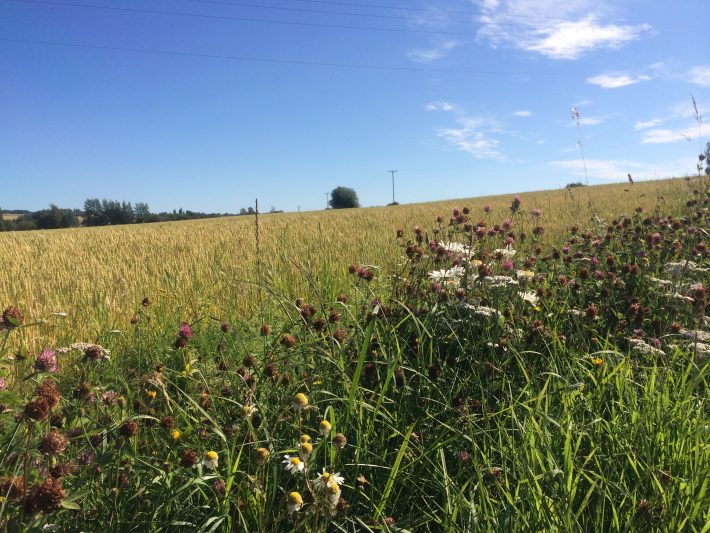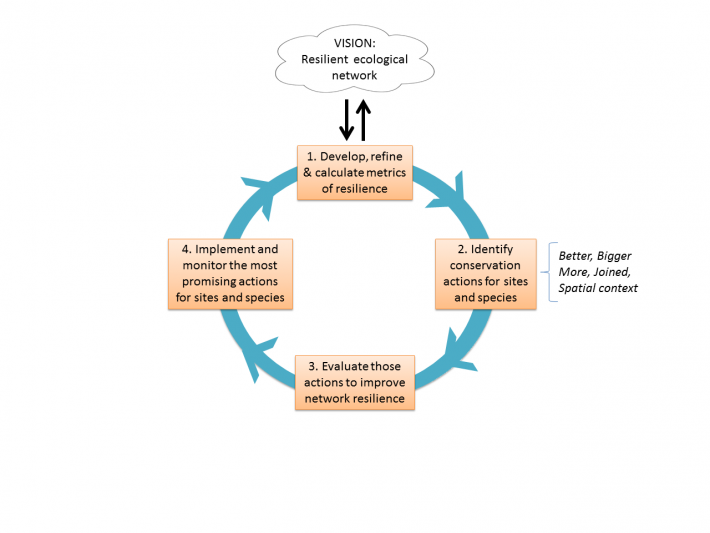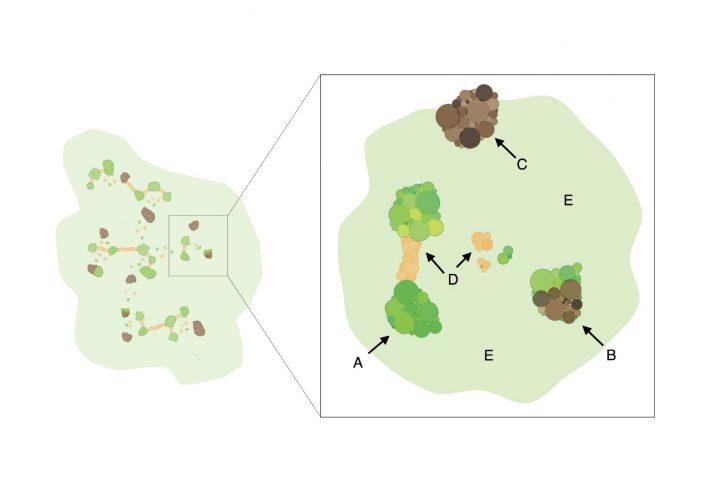Defining and delivering resilient ecological networks in England

The UK Government’s 25 Year Environment Plan (henceforth 25YEP) for England is an exciting opportunity to reframe the direction of nature conservation in Britain. It sets the goal of creating a nature recovery network to protect and restore wildlife.
The idea of a Nature Recovery Network draws strongly on the vision and principles of Sir John Lawton’s ‘Making Space for Nature’ report, and the widely accepted mantra that wildlife sites should be ‘better, bigger, more and joined’ for ecological networks to be resilient in the face of continuing environmental change and human pressures, and capable of sustaining wildlife populations into the future.
Specific commitments of the 25YEP include the creation of 500,000 hectares of new wildlife habitat and putting 75% of existing protected sites into ‘favourable condition’. These are laudable targets, and achieving them would certainly benefit wildlife. However, there’s no connection between the targets and the overarching goal of resilient ecological networks. In other words, we don’t know how much habitat creation would be enough.
In our new paper in Journal of Applied Ecology , we argue that ecologists have the tools at hand to bridge this divide. This is possible due to the confluence of improved statistical modelling tools, better data and emerging theory about spatial networks. These developments make it possible to conceptualise what a resilient ecological network would look like, and to derive metrics for resilience under current conditions. For example, resilience could be defined in terms of species’ projected extinction risk, given the current network and plausible scenarios for climate change, future land-use etc.

We define an adaptive management cycle (figure 1) for improving ecological resilience. Step 1: network resilience would be evaluated periodically. Step 2: possible measures for improving ecological resilience would be identified, e.g. intensive management of particular habitat patches, or the adoption of agri-environment schemes. Step 3: The effectiveness of these actions would then be evaluated in terms of expected changes in network resilience. The most cost-effective actions would then be implemented, and their effectiveness monitored (step 4).

Implementing the adaptive management framework will take time and money, so existing targets for habitat creation and management are important to provide a stimulus for action. In fact, we argue that additional targets would be desirable. These include specific conservation targets for National Parks and Areas of Outstanding Natural Beauty (AONBs): this proposal is particularly timely as the government launches a review of how these designated areas can boost wildlife, support the recovery of natural habitats and connect more people with nature. However, a key insight from our paper is that targets are a means to an end, and that we should also evaluate the targets in the light of new data about the effectiveness of different types of action (bigger, better, more and joined) and their impact on overall network resilience.
The paper demonstrates how theory and modelling can inform policy-relevant questions, specifically the development of a resilient ecological network. Whilst this is primarily of interest to the ecological community, we’re now working on a policy brief for civil servants to synthesise the key messages.
Read the full article (freely available for a limited time):
Isaac NJ, Brotherton PN, Bullock JM, et al (2018). Defining and delivering resilient ecological networks: nature conservation in England. J Appl Ecol. Accepted Author Manuscript. DOI: 10.1111/1365-2664.13196
Like what we stand for?
Support our mission and help develop the next generation of ecologists by donating to the British Ecological Society.